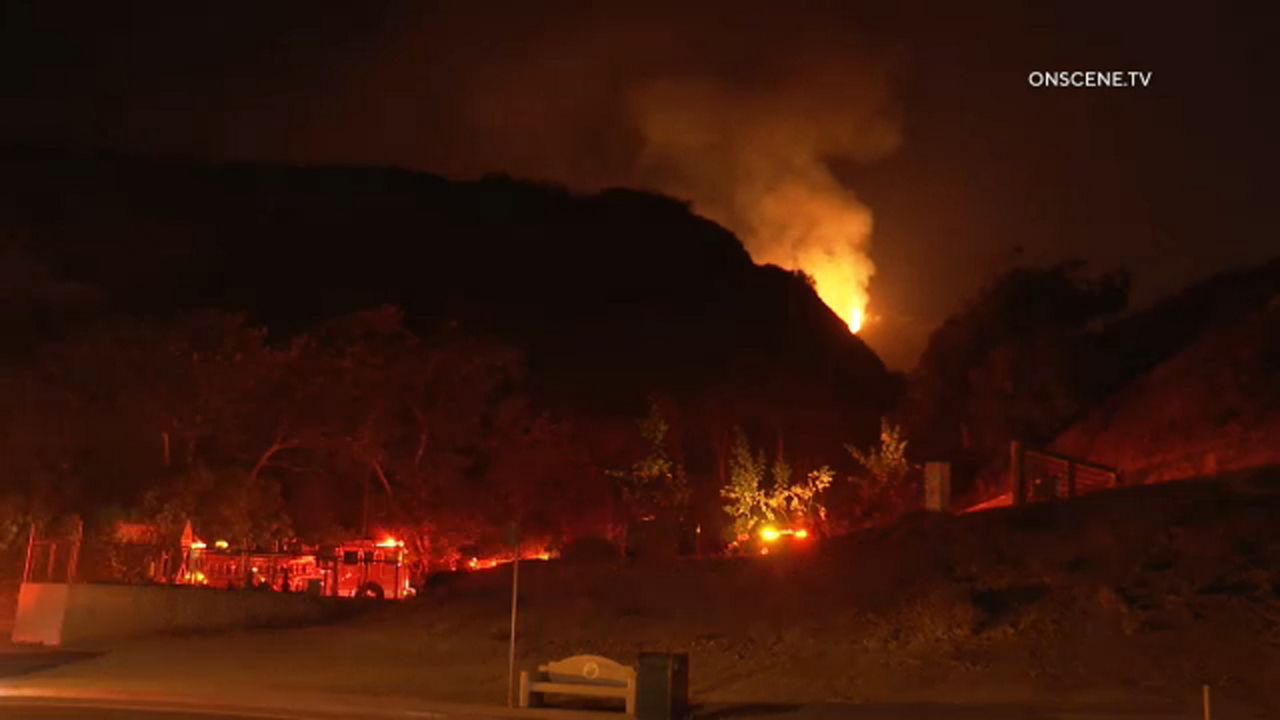CULVER CITY, Calif. — Collecting recyclables helps Neil Glickman feel like he's taking an active part in protecting the environment. He also sorts and collects the recyclables at home with his son, who gets the cash benefits.
As Glickman unloaded the back of his SUV recently, he took stock on the multiple bins he filled.
"Wow, I didn't realize I had that much," he said.
He enjoys hauling over as much as he can. But for a while, it became more work finding somewhere to take his recyclables as recycling opportunities in the area diminished.
"We stored it in plastic bags on the side of the house, and we made one big trip less often," Glickman said.
To bring more recycling redemption opportunities to Californians, CalRecycle, the government agency that oversees recycling in the state, created five pilot programs, including a mobile redemption site in Culver City. The project uses SoCal Recycling trucks in two city locations on alternate days. The goal is to bring more access to local communities as many recycling centers have closed.
Armond Abramian is the president and CEO of SoCal Recycling. He manages the Culver City sites. He shared that operating costs are what's driving recycling centers out of business.
"We've had many recycling centers in the past, and due to commodity prices going down, costs of business going up, with payroll and insurance, we had to shut down quite a few centers," Abramian said.
The costs he described drove SoCal Recycling to go from 50 recycling centers to just five. With the addition of mobile recycling sites, Abramian believes recycling centers could bridge the gap with low overhead fees and access to different neighborhoods.
"I think the mobile recycling program is the most feasible way to move forward because it reduces the impact on a given neighborhood, rather than being at a particular location six or seven days of the week. We're only there one, two, maybe three. And by moving to different parts of the city, we can help people who don't have transportation like the elderly to have a more convenient way to recycle," Abramian said.
But what about recycling prices? By law, recycling centers are required to pay out a California Refund Value for up to 50 beverage containers in each category — glass, aluminum and plastic. Any more than that is up to a recycling facility to pay out by weight, by count or by scrap value, if the item is contaminated.
According to Abramian and CalRecycle, this is to speed up the process. Beverage containers that are less than 24 ounces come with a 5 cents value — over 24 ounces is worth 10 cents. Depending on the size of containers, one could profit or lose out since weight prices, set by the state, average on the lower end.
As Glickman dragged his haul over from his SUV to a scale, he wasn't too concerned about how his haul was being cashed in. Glickman said that he was just happy to have a convenient location.
"I told my son $70-$80," Glickman said as he pointed to his redemption receipt that totaled $70.05. An amount that's helping his son save some extra cash, in addition to doing his part to protect the place he calls home.
SoCal Recycling and Culver City's mobile recycling program are located at 10772 Jefferson Blvd. (behind Ralphs) on Mondays, Tuesdays and Saturdays; and at 11030 Jefferson Blvd. (behind Party City) on Wednesdays, Thursdays and Fridays.











